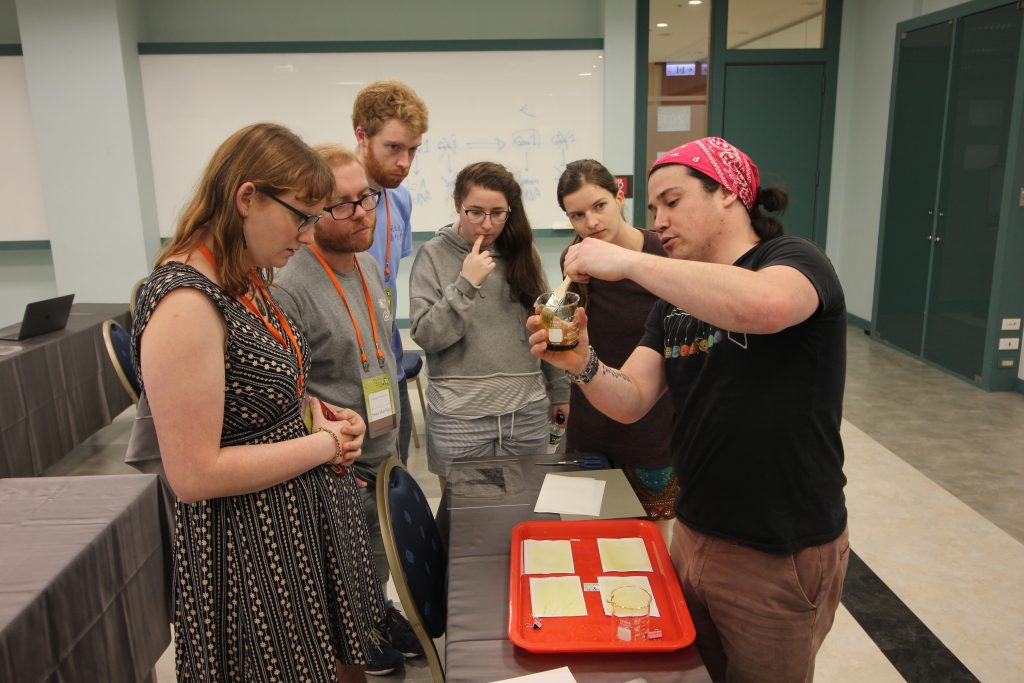Completing the chemistry quiz crossed off one of the team’s two major activities at the camp, the other being rather more involved in terms of preparation; tomorrow the team will facilitate 144 students designing, exposing and developing their own cyanotype photograms.
Cyanotype photography was developed (as the wonderful Steve Ting informs me) in 1842 by polymath Sir John Herschel, who used is primarily as a method for duplicating his notes. The key ingredients are ferric ammonium citrate and potassium ferricyanide, which are mixed together and applied to paper. A negative image is this placed on top of the paper and exposed to UV light, turning the exposed areas of the paper blue, while those covered by the negative remain white.
This would be a straightforward demonstration for a class in a lab on a sunny day. Given that we have an amalgamation of many classes assembled in a hotel conference room during a typhoon, contingency plans are necessary. Should the UV index fall below 4 on the day, we may need to use a set of UV lights arranged as a backup. Despite prior testing, our UV light exposures aren’t behaving very well today however…
While a small crew continues testing the UV lamp option, the majority of the outreach team is busy cutting out acetate negatives, finding leaves for the students to use as images, and preparing volumes of the ferric ammonium citrate and potassium ferricyanide solution. Shaun Mackay explains the plan in the following video, while the rest of us pray for sun: https://www.youtube.com/watch?v=sDjYlQPPGoE
This blog will be updated periodically as the camp progresses, but you can also keep up with the team on facebook, twitter, youtube, and Instagram at the following URLs
Otago chemistry outreach page: https://www.facebook.com/chemotago/
Youtube: https://www.youtube.com/channel/UCvEnYDv1AdrA016_E86Fj0w
Twitter: https://twitter.com/chemotago
Instagram: https://www.instagram.com/chemotago/



Recent comments